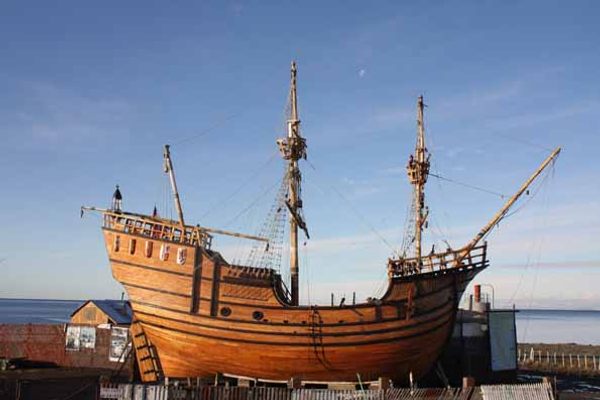Kon-Tiki Museum
Across the Pacific in a raft, a museum dedicated to Thor Heyerdahl's now legendary expedition.
In 1947 Thor Heyerdahl and a crew of five others sailed 4300 miles, from Peru to the Pacific islands, in a raft they had constructed from balsa wood.
Many people thought it was a suicide mission, but on August 7, 1947 after 101 days in the open ocean the Kon-Tiki (the name given to the raft) crashed onto a reef on the Raroia island. The men had successfully rafted 8000 kms or 1/5th of the way around the earths circumference.
At the time of the expedition one of great unsolved ethnographic mysteries was how the original inhabitants of Polynesian islands were able to navigate the thousands of miles of open ocean and populate distant scattered islands with stone age technology. One of proposed theories was that the Polynesian people started their migration from South America in pre-Columbian times, and used prevailing westward winds to carry their rafts across the ocean. Heyerdahl intention was to prove this theory was valid by doing it himself.
Peru was chosen as a starting point of the expedition. The Kon-Tiki raft was constructed out of balsa wood, bamboo and ropes, using only technology available to people of pre-Columbian America. The crew quickly found that the ocean current pushed them at a steady pace of 1.5 knots and they were able to steer using a system of a lashed outrigger and sideboards that stuck into the water at varying depths.
The crew had little trouble with food and though they were provided with MRI’s, flying fish constantly flopped on-board (going so far as to occasionally provide a wet slap in the face to one of the crew as they sailed through the air) and these, along with shark, dolphin, squid and a soup made of plankton constituted their meals. All of which helped prove that there was no technical obstacle for ancient Peruvian people to explore the Pacific.
Unfortunately for Heyerdahl, subsequent linguistic and genetic research has proven that the origin of Polynesian peoples lies in Asia and that their migration had an eastward direction. Heyerdahl believed it impossible that the ancient explorers would set sail against the prevailing winds. In reality it was exactly the fact that they could rely on the westward wind to safely return them home in case of unsuccessful expedition, that encouraged these ancient navigators to sail ever more to the east.
Proceedings from the documentary movie and the book about his first expedition provided Heyerdahl with the money to fund several more trips including a 1955-1956 expedition to Rapa Nui, a 1969 and 1970 cross-Atlantic expeditions from Morocco to America in reed rafts Ra and Ra II, and a 1978 expedition in reed raft Tigris across Indian ocean.
The original Kon-Tiki raft is at the display in the museum. The museum also contains replicas of Ra, Ra II and Tigris rafts, as well as maps and additional material from the now legendary Heyerdahl expeditions.
Know Before You Go
There is a regular, all year bus service (bus no. 30) to the Kon-Tiki Museum from the center of Oslo. The bus stops right outside the museum. The stop is called "Bygdøynes".
From 15th March to 12th October you can take a short but pleasant boat trip to the Kon-Tiki Museum. The second stop is called "Bygdøynes" and this is where you disembark. The museum is 100 metres from the dock.



























Follow us on Twitter to get the latest on the world's hidden wonders.
Like us on Facebook to get the latest on the world's hidden wonders.
Follow us on Twitter Like us on Facebook